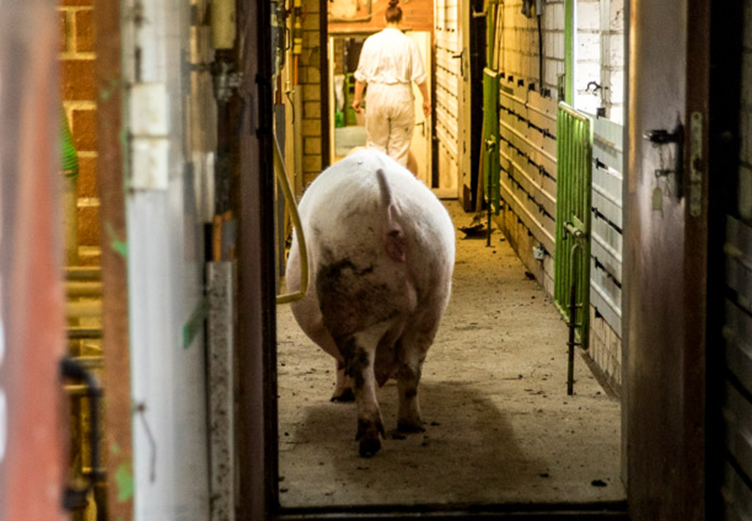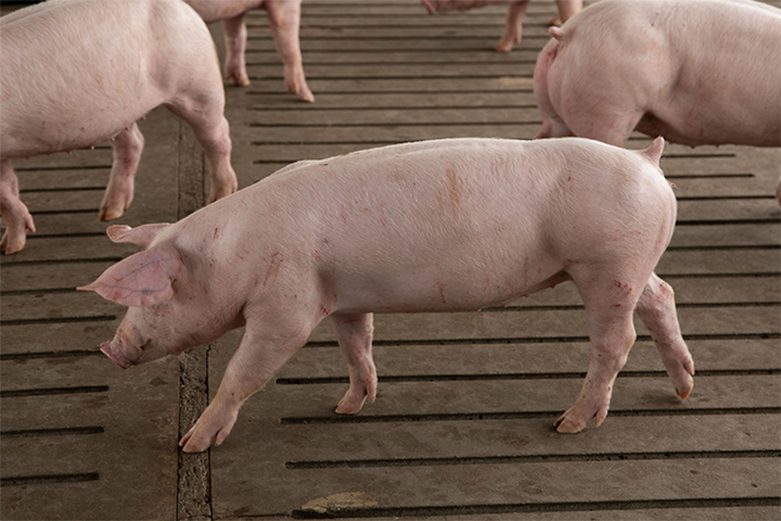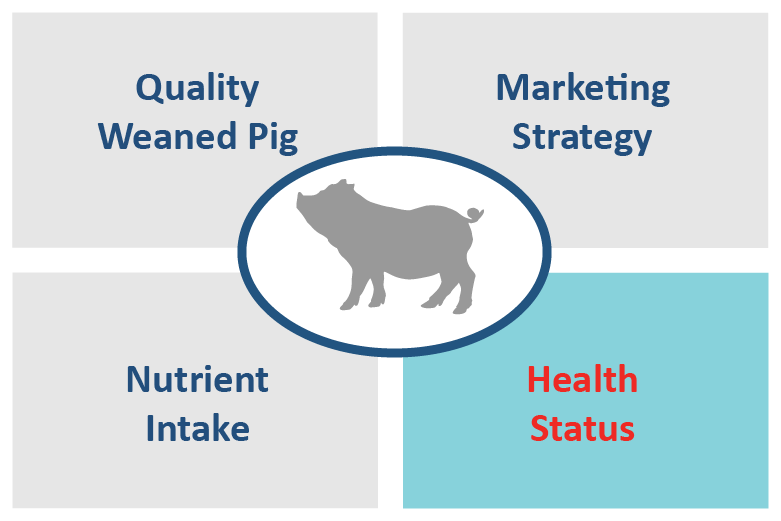The continuing threat posed by African Swine Fever (ASF) requires control of all possible routes of ASF transmission. The feed manufacturing process can be an added vector for the spread of the virus, as was the case with Porcine Epidemic Diarrhoea (PED) in the USA in 2013.
To assess the importance of biosecurity in a feed mill regarding the transmission of viruses such as PEDv and ASF viruses, this study analyses the viral contamination of 18 areas involved in the feed manufacturing process. Environmental swabs from 18 locations were collected after each batch of feed was discharged. The locations of the swabs were categorized into four zones: 1) feed contact surface, 2) non-feed contact surface < 1 meter away from feed, 3) non-feed contact surface > 1 meter from feed, and 4) transient surfaces (boot soles).
A negative control batch was used prior to inoculation of the virus material, followed by the production of a positive control batch, where 530 ml of ASF virus (2.7 × 106 TCDI50/ml) was mixed with 4.7 kg of feed, which in turn was mixed with another 20 kg of feed, and where the final concentration of the inoculate was 5.6 × 104 TCID50/g ASF. After this positive control batch, four subsequent batches of feed were produced to assess the persistence of the virus after the process of producing a contaminated feed.
Samples were taken from the different zones and analysed by qPCR. As shown in the table, the surfaces with the negative control feed were negative for the presence of the virus at all points tested. However, both the positive control batch and the four subsequent batches were positive on all surfaces.
Table: Interactive effect of feed batch and zone on detection of African swine fever virus (ASFV) during manufacture of virus inoculated feed

The study shows that the safety of raw materials used in feed processing must be ensured and that proper cleaning and disinfection of the elements involved in the whole manufacturing process must be guaranteed. Another important finding is that the soles of workers’ boots contained a higher amount of ASF DNA compared to any other area sampled.
Source: Evaluating the distribution of African swine fever virus within a feed mill environment following manufacture of inoculated feed
C. Grace Elijah1, Jessie D. Trujillo1,2, Cassandra K. Jones3, Natasha N. Gaudreault1,2, Charles R. Stark4, Konner R. Cool1,2, Chad B. Paulk4, Taeyong Kwon1,2, Jason C. Woodworth3, Igor Morozov1,2, Carmina Gallardo5, Jordan T. Gebhardt1, Jürgen A. Richt1,2
1 Department of Diagnostic Medicine/Pathobiology, College of Veterinary Medicine, Kansas State University, Manhattan, Kansas, United States of America, 2 Center of Excellence for Emerging and Zoonotic Animal Disease, Kansas State University, Manhattan, Kansas, United States of America, 3 Department of Animal Sciences and Industry, College of Agriculture, Kansas State University, Manhattan, Kansas, United States of America, 4 Department of Grain Science and Industry, College of Agriculture, Kansas State University, Manhattan, Kansas, United States of America, 5 Instituto Nacional de Investigación y Tecnología Agraria y Alimentaria, Animal Health Research Centre, Madrid, Madrid, Spain
PIC Comments
Adrián López, PIC Technical Services Southern Europe
In an increasingly globalised sector, biosecurity is the key element to safeguard the health status of farms against globally distributed diseases such as PED and ASF. Therefore, any critical point that poses a risk must be controlled and minimised, for example, food of pork origin can be an important entry point for the virus on the farm. On the other hand, feed mills must ensure that raw materials are safe and that there is no contamination during the whole manufacturing process. Similarly, the operators involved in the feed manufacturing processes can pose a serious risk for the possible spread of the virus, and therefore, working procedures must be in place to mitigate this risk factor.
It is therefore also necessary to have a plan for early detection of the virus in feed mills, together with a good traceability system to act quickly on any suspicion. Effective cleaning and disinfection of all the elements involved in the manufacturing process are essential in view of the unstoppable spread of ASF due to the persistence of the virus in the elements of the system after a contaminated batch.
All in all, this article places feed mills as a key point in the fight against the spread of ASF.
Originally published in «Investigación Comentada – SUIS»




